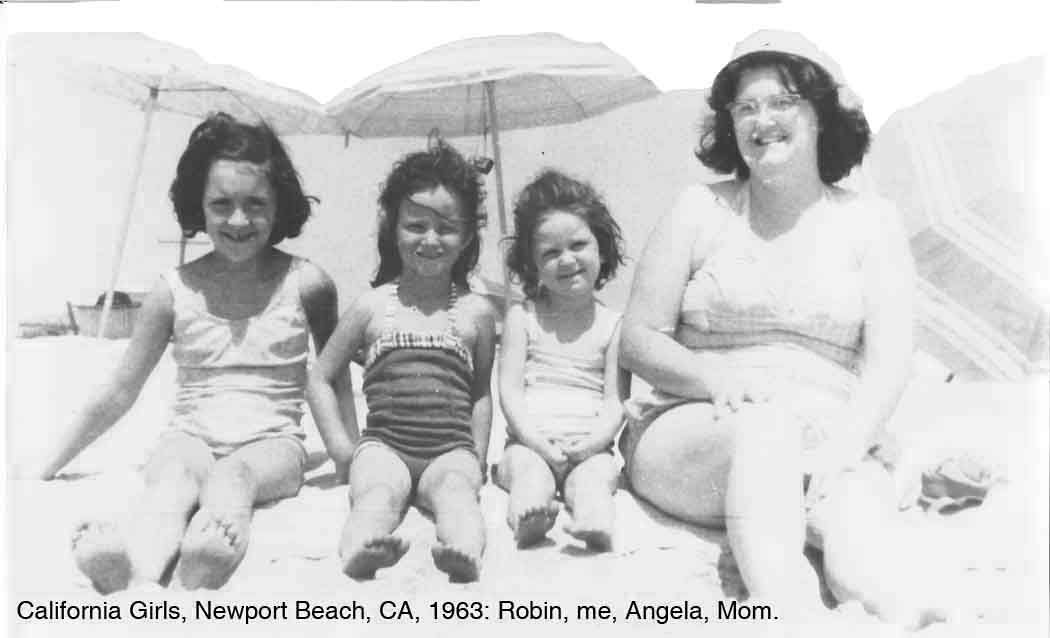May is skin cancer awareness month. It’s also the month when my younger sister, Angie, was born. Angie died in 1990 from melanoma, the deadliest form of skin cancer. When I remember her birthday each year, I am saddened that melanoma is still the easiest form of cancer to detect and treat early, but still one of the deadliest if treated late.
Angie was a freckled child, with blue eyes and auburn hair. We were California girls and our frequent trips to the beach often left Angie with angry red sunburns that blistered and peeled. It was the Coppertone era—the 1960s—when billboards and magazine ads iconized that cute little girl with the frisky puppy nipping down her bathing suit bottom to reveal that distinct tan and white demarcation. While Gidget lived it up under the sun, the fair-skinned people of the world burned and baked their skins to attempt the “perfect” tan.

Angie never got that perfect tan. My parents smeared her down with sunscreen while she compared herself to our older sister, Robin, and me, who tanned easily. As a teenager outside the watchful eyes of our parents, Angie tried her skin again at sun tanning. The results were always the same—scorched skin.
At the age of 15, a mole on Angie’s back began oozing a clear, sticky substance. The doctor didn’t seem overly concerned, telling my mother Angie was “too young” for skin cancer, but thought that removal of the offending mole was a good idea. Following the removal, I remember Angie telling me the doctor said the mole was so deep he couldn’t get it all out. When the biopsy result came back, it said, “Juvenile. Melanoma. Benign.” The doctor told my mom there was nothing to worry about.
Years went by. Angie went to college, married, had a son, and obtained a job as a medical assistant for a large medical group in Southern California. When she noticed odd swellings in the lymph nodes under her arms, she received immediate medical attention from her friend and physician for whom she worked. When a battery of lab tests didn’t identify a source of the swelling, the doctor decided to remove the troublesome nodes and do a biopsy.
The results of that biopsy shocked and dismayed even that seasoned physician. At age 29, Angie was diagnosed with stage IV melanoma. What pathologists erroneously deemed “benign” back in 1976 was actually an early malignant melanoma that would raise its hideous head 13 years later.
By the time my sister’s melanoma was correctly diagnosed in 1990, she had already lived 12 years beyond most advanced melanoma patients. Perhaps it was her youth, her love of life, or being a mother; or maybe it was the lives of those she touched and cared for in the clinic which helped her surpass her life expectancy. Nevertheless, it was less than four months from the time of her diagnosis to the day of her passing.
Angie would be 57 years old today if the medical lab had correctly interpreted the melanoma diagnosis and the doctor had been more proactive about his own education in skin cancers.
Angie’s premature death at the age of 29 compelled me to share her story with anyone who has ears to hear. I know at least one blond-haired, blue-eyed girl who routinely wears her sunscreen—my own daughter Elisabeth.
Knowing your risk for skin cancer may save your life. While most melanomas occur on parts of the body with the greatest amount of sun exposure, many can form in places where the sun doesn’t shine. Fair-skinned people are most susceptible to all forms of skin cancer, but that doesn’t give darker-skinned people a get-out-of-jail-free card for skin cancer. African American and other dark-skinned people do get skin cancer, including melanoma. In fact, melanomas found on African Americans often go undetected because many black people consider skin cancer a white person’s disease.
Because of my family’s history of skin cancer, I see a dermatologist yearly for a full-body exam. If you don’t have access to a yearly dermatology exam, find a trusted friend who can inspect your body head to toe for any unusual moles, spots, or sores that don’t heal. Take pictures to use as baseline photographs to compare from year to year. If you find any changes in moles or the sudden development of a new mole or odd-looking spot, see your doctor immediately. Early detection of skin cancer in any form can save your life.
You can learn more about your own risk for melanoma or other less deadly forms of skin cancer here:
Melanoma: Melanoma Research Foundation.
Basal cell or squamous cell: American Cancer Society.
A version of this piece was first published in my personal blog.


